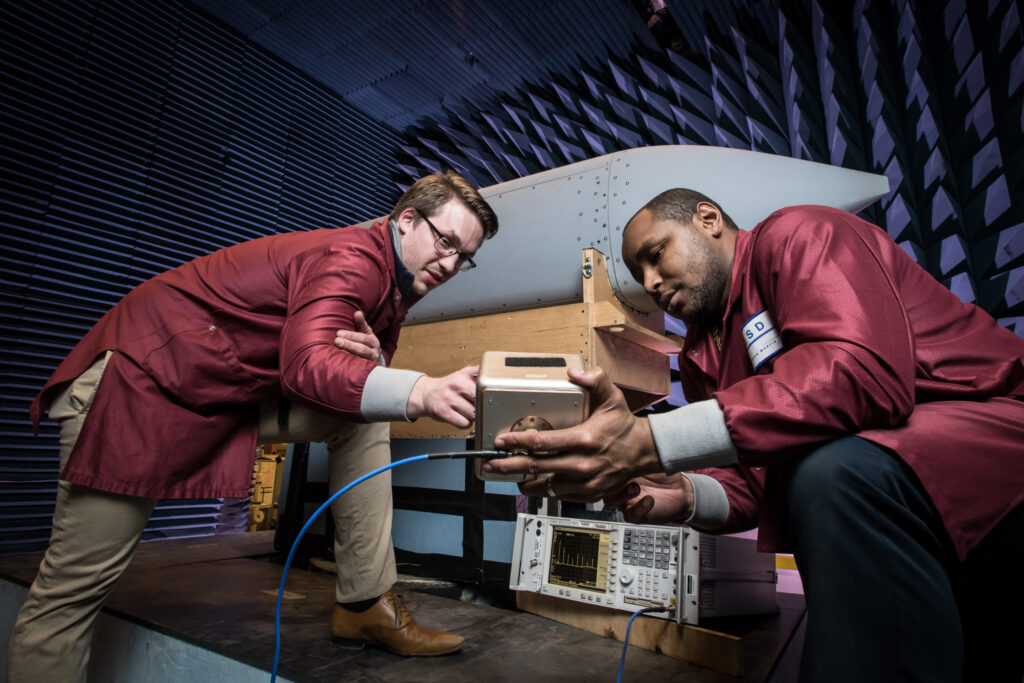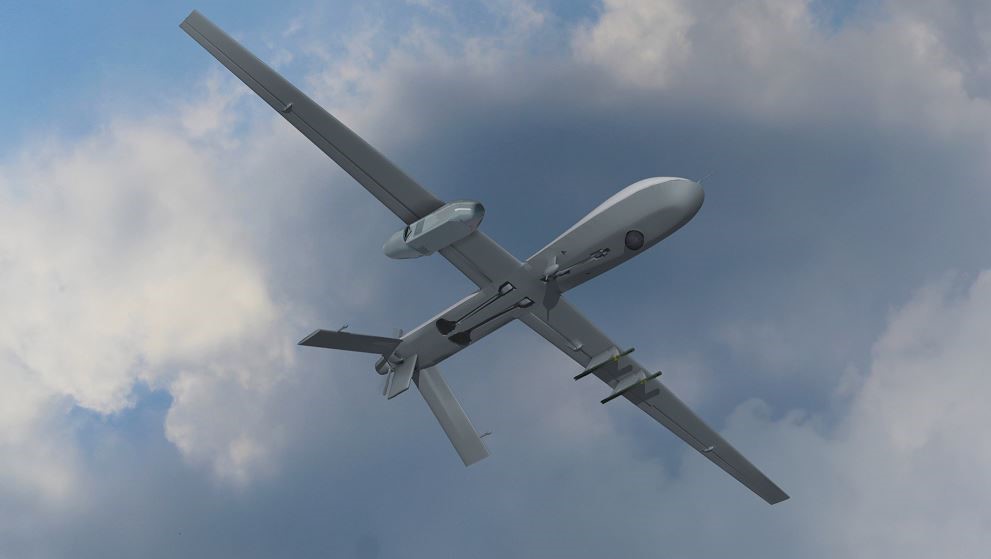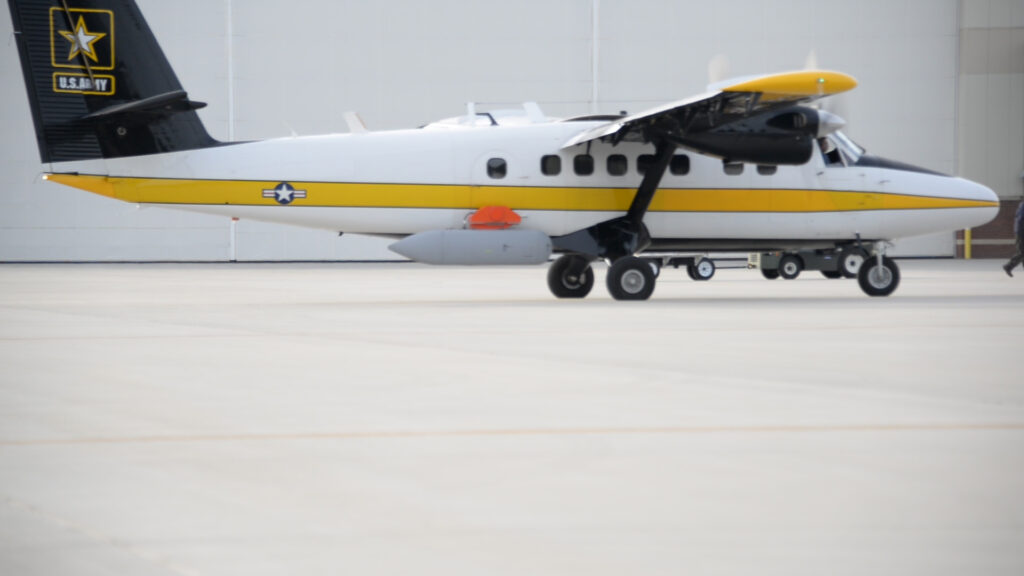By SYDNEY J. FREEDBERG JR.
Lockheed technicians test their Silent Crow cyber/electronic warfare pod.
 WASHINGTON: After successful flight tests of Lockheed Martin’s Silent Crow prototype last year, the Army took a big step to rebuilding its electronic warfare capabilities, awarding the company $74.85 million to develop, build, and test operational EW pods.
WASHINGTON: After successful flight tests of Lockheed Martin’s Silent Crow prototype last year, the Army took a big step to rebuilding its electronic warfare capabilities, awarding the company $74.85 million to develop, build, and test operational EW pods.
That award actually happened in January, but Lockheed only announced it this morning, probably because security on this highly sensitive technology is so tight that routine review of public statements can take months. I’ve been asking for an interview on Silent Crow for over a year, ever since Lockheed announced its initial $18 million Army award for prototype demonstrations in January 2019 — an additional $6 million for a second prototype followed in August — and it took until yesterday to wrangle an interview with one of the company’s experts.
Largely developed at Lockheed’s own expense, the Silent Crow pod is now the leading contender for the flying flagship of the Army’s rebuilt electronic warfare force. Army EW was largely disbanded after the Cold War, except for short-range jammers to shut down remote-controlled roadside bombs. Now it’s being urgently rebuilt to counter Russia and China, whose high-tech forces – unlike Afghan guerrillas – rely heavily on radio and radar systems, whose transmissions US forces must be able to detect, analyze and disrupt.

Lockheed Martin’s Silent Crow cyber/electronic warfare pod on an Army MQ-1C Grey Eagle drone. (Lockheed illustration)
Awkwardly designated “Multi-Function Electronic Warfare – Air – Large” (MFEW-AL) by the Army, the new pod will fly into battle under the wing of the MQ-1C Grey Eagle, the much-upgraded Army version of the Predator. Smaller MFEW variants will go on smaller drones like the current RQ-7 Shadow and the Future Tactical UAS. The Army may even put decoy transmitters into artillery shells it can fire across the battlefield.
An Army prototype, the Tactical Electronic Warfare System (TEWS), at the National Training Center on Fort Irwin, California.
The Army is also developing ground-based EW vehicles, the Terrestrial Layer System (TLS), for which it has already tested a Humvee-mounted version of the Silent Crow technology. Lockheed calls this version GRFIN, Ground Radio-Frequency Intelligence Node. Lockheed’s business development director for both systems, John Wojnar, told me he hoped to hear from the Army next month on whether they would pick GRFIN for TLS. If so, Lockheed would provide the Army with both its airborne and ground-based long-range jammers, simplifying logistics and compatibility problems for the service while giving the company a double win.
But Lockheed won’t lock the Army into a single solution with no room for competition, Wojnar promised. The service developed standards for a modular open architecture that allows the military to swap out components from one company and replace them with upgraded alternatives from any competitor. MFEW-AL is the first Army program to fully implement the new CMOSS standard. (CMOSS is a nested acronym for the C4ISR/Electronic Warfare Modular Open Suite of Standards).
The Army wants “to be able to insert [new] technology rapidly and not be held hostage to proprietary hardware, proprietary software from any one company,” Wojnar told me. In fact, he said, the Silent Crow prototype integrated components from multiple companies.

The Lockheed Silent Crow cyber/EW pod installed on an Army UV-18 Twin Otter aircraft for testing.
Of course, Lockheed feels its technology can out-compete all comers. Why are they so confident?
First, Wojnar told me, the aerospace titan has over four decades of experience in traditional electronic warfare systems, fitted to everything from the B-2 stealth bomber to Navy warships to the AH-64 Apache attack helicopter. Second, it has roughly 750 employees working on cybersecurity and cyber warfare for unspecified “three-letter agencies” (e.g. NSA). Silent Crow brings both those talent pools together.
Historically, cyber operations occurred over landline networks and electronic warfare over radio-frequency (RF) airwaves. The rise of wireless networks has caused the two to blur. The military wants to move away from traditional high-powered jamming, which filled the frequencies the enemy used with blasts of static, to precisely targeted techniques, designed to subtly disrupt the enemy’s communications and radar networks without their realizing they’re being deceived. There are even reports that “RF-enabled cyber” can transmit computer viruses wirelessly into an enemy network, although Wojnar declined to confirm or deny such sensitive details.
Wojnar would talk to me, however, about other high-tech advantages of Silent Crow. The company has used cutting-edge manufacturing techniques, including 3D printing, to shrink some key components like antennas, to just 25 percent the size of current systems. That kind of miniaturization, along with the new emphasis on high precision over high power, allows the military to pack much more electronic warfare capability into a drone-board pod.
The pod’s digital brain also uses machine-learning algorithms to analyze enemy signals it detects and compute effective countermeasures on the fly, instead of having to return to base and download new data to human analysts. (Insiders call this cognitive electronic warfare). Lockheed also offers larger artificial intelligences to assist post-mission analysis on the ground, Wojnar said. But while an AI small enough to fit inside the pod is necessarily less powerful, it can respond immediately in a way a traditional system never could.
The Army tested both Lockheed’s EW offerings, the airborne Silent Crow and the ground-based GRFIN, at its CECOM flight center in New Jersey in August and July. Silent Crow went on to an aerial-only test as part of the Army’s Cyber Blitz wargames in September.
No comments:
Post a Comment